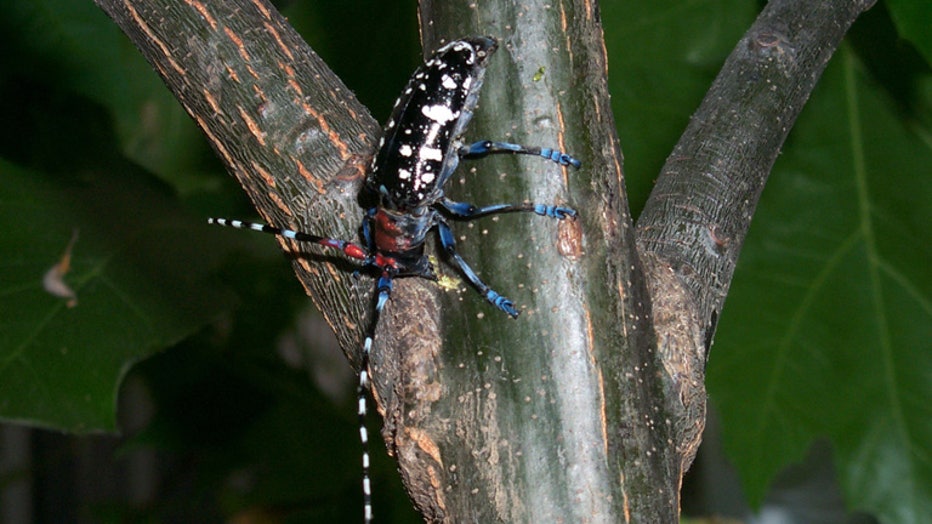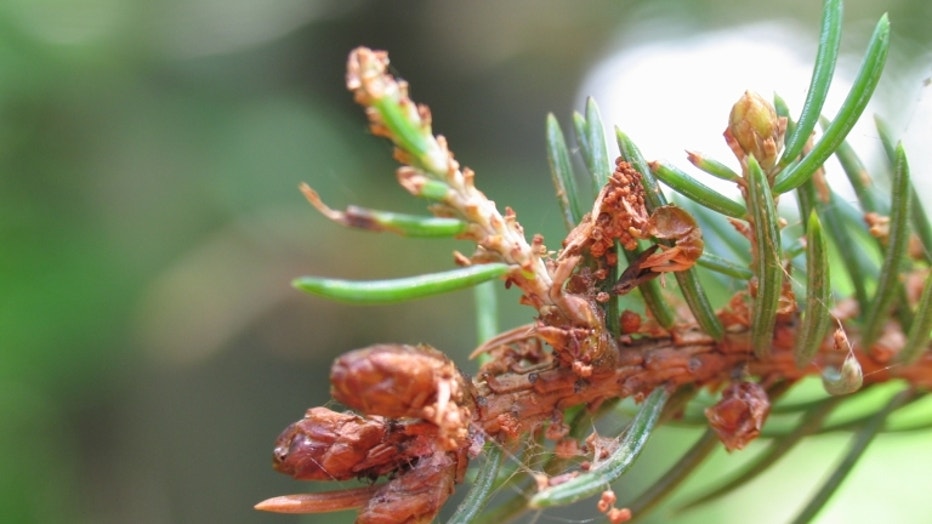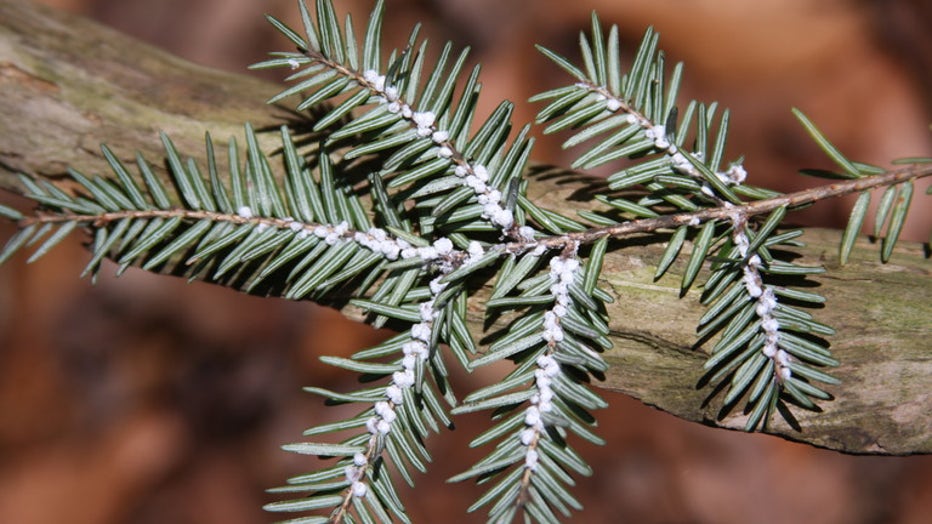Invasive beech leaf disease and spotted lanternfly discovered in Michigan last year
An immature Spotted Lanternfly. Photo courtesy: Lawrence Barringer, Pennsylvania Department of Agriculture, Bugwood.org
(FOX 2) - Michigan welcomed two new guests to the state last year.
Well, ‘welcome’ may be a stretch - the guests were uninvited before they showed up: Beech Leaf Disease and Spotted Lanternfly.
Together, the two invasive pests bring new challenges to the state of Michigan, which had already been expecting them to eventually arrive at its doorstep. Even so, their arrival represents the latest development in the never-ending struggle to keep the state protected from its invaders.
"We have been preparing for both of those new pests for a number of yeas," said Simeon Wright, who works with the Department of Natural Resources. "We were expecting that we would find them in Michigan - it was more a matter of when."
MORE: Mysterious sand slabs appearing on Lake Michigan beach
Both discoveries were noted in the DNR's 2022 tree report card. Both bring a new array of threats to native plants and trees in Michigan, which could have negative effects on the agricultural economy and the biodiversity in the state.
Beech Leaf and Spotted Lanternfly
Beech Leaf Disease, which has ravaged beech trees in other states, was reported by a perceptive homeowner in St. Clair County. It's since been confirmed in Oakland and Wayne counties as well.
Wright said the DNR considered its arrival a "medium concern" due to the state already managing beech bark disease, another invasive organism that threatens the 37 million beech trees in Michigan.
Meanwhile, the Spotted Lanternfly which is known by its vibrant orange wings and has been on the radar of pest monitors for the past few years, represents a bigger threat to Michigan's agriculture instead of its trees.
A potential detection of the invasive moth was reported in Oakland County on a single property. Hatched eggs found at the nursery suggests to the Michigan Department of Agriculture and Rural Development that it was at least two years old.

Asian longhorned beetle. Photo courtesy: Dean Morewood, Health Canada, Bugwood.org
"It may have been just a bit of bad luck that we found them in the same year," Wright said. "But it's also true that in many cases, invasive pests become established in a new location several years before it's detected.
RELATED: Michigan-native bird species Black-capped Chickadee uses supercharged memory to survive winter
"There's always pests on the horizon that we could find in Michigan, then also ones that no one is aware of right now that could be an issue."
A down year for other pests
Ironically, a bad year for finding new pests was also a good year for the pests that have already integrated into the local ecology.
Population numbers for spruce budworm, which damages white spruce and balsam firs, and spongy moths, which devastated trees during the worst outbreak ever last year, were both down in 2022.
A crash in these insect numbers is a common sighting among bug populations, and happen every 10 years or so.
"Historically, we know we see heavy defoliation roughly ever decade," Wright said, "and then populations crash as various diseases nd predators move in."
That includes a virus that attacks the caterpillars that turn into spongy moths, as well as a fungal disease that can kill off egg masses.

Spruce Budworm. Photo courtesy: Joseph Obrien, USDA Forest Service, Bugwood.org
In other words, animal and plant species that had previously spread through the state unabated when they first arrived have now more-or-less assimilated into the environment. The predators and diseases that live off their existence in the state now keep their populations in check.
MORE: Ancient life, rare plants found in Michigan's sinkholes
"It may be invasive from another part of the world, but it behaves like a native defoliator does now," Wright said. "It's a similar pattern that we've seen."
How to report an invasive species
One of the state's best defenses against invasive species is having an educated populace that can identify when a foreign pest has moved in.
The faster it's detected, the more time managing agencies will have to prepare a response and locate any other potential species nearby that could enable it to spread even faster.

Hemlock woolly adelgid. Photo courtesy: Steven Katovich, Bugwood.org
The state has a watch list of bugs and plants for residents to be on the lookout for. They include insects like Asian longhorned beetles and spotted lanternfly, animals like invasive carp that include bighead, black, grass, and silver, as well as invasive plants like hemlock woolly adelgid and kudzu.
Public awareness will be key for the state detecting the troublesome species going forward. If you believe you've located an invasive species, there are multiple reporting options:
- Midwest Invasive Species Information NetworkReport sightings through the MISIN website or submit through the mobile application.
- Report sightings through the MISIN website or submit through the mobile application.
- Michigan Department of Agriculture and Rural DevelopmentEmail MDA-Info@Michigan.gov or call the MDARD Customer Service Center at (800) 292-3939.
- Email MDA-Info@Michigan.gov or call the MDARD Customer Service Center at (800) 292-3939.
- Michigan DNR Forest Health TeamEmail suspected sightings, with photos, to DNR-FRD-Forest-Health@Michigan.gov.
- Email suspected sightings, with photos, to DNR-FRD-Forest-Health@Michigan.gov.

